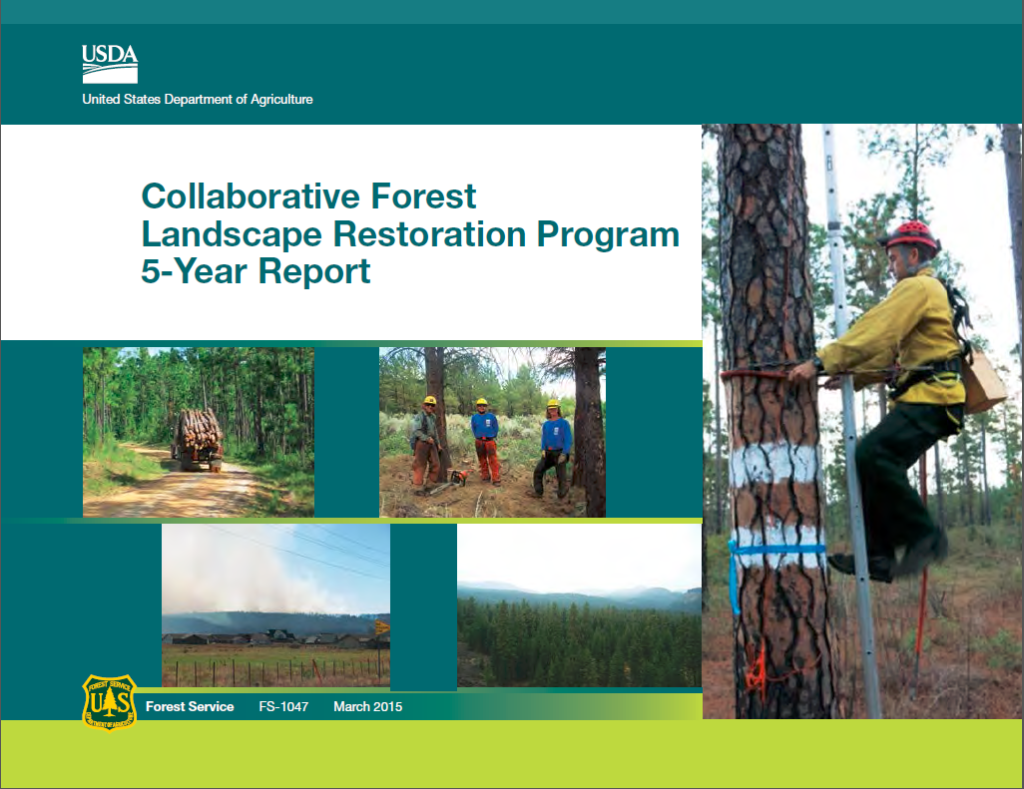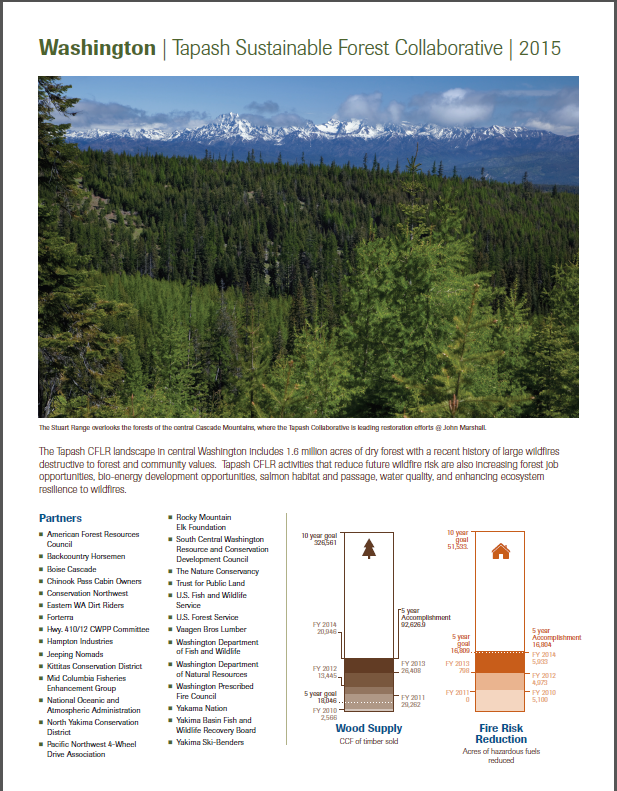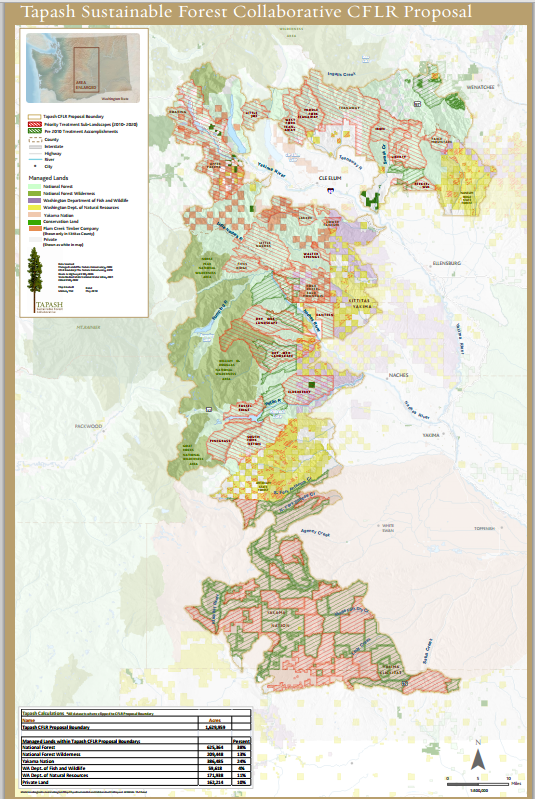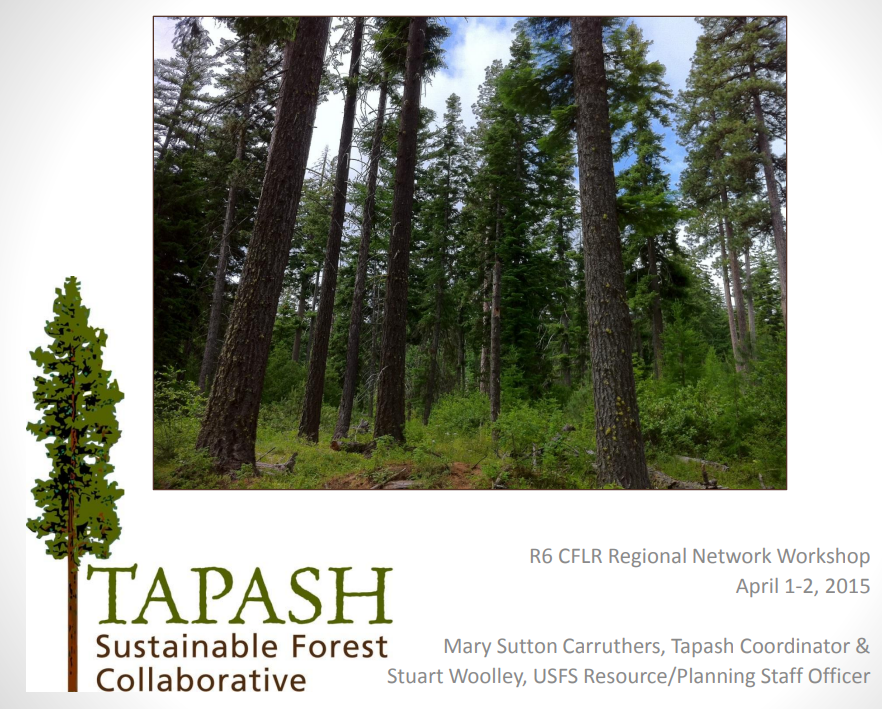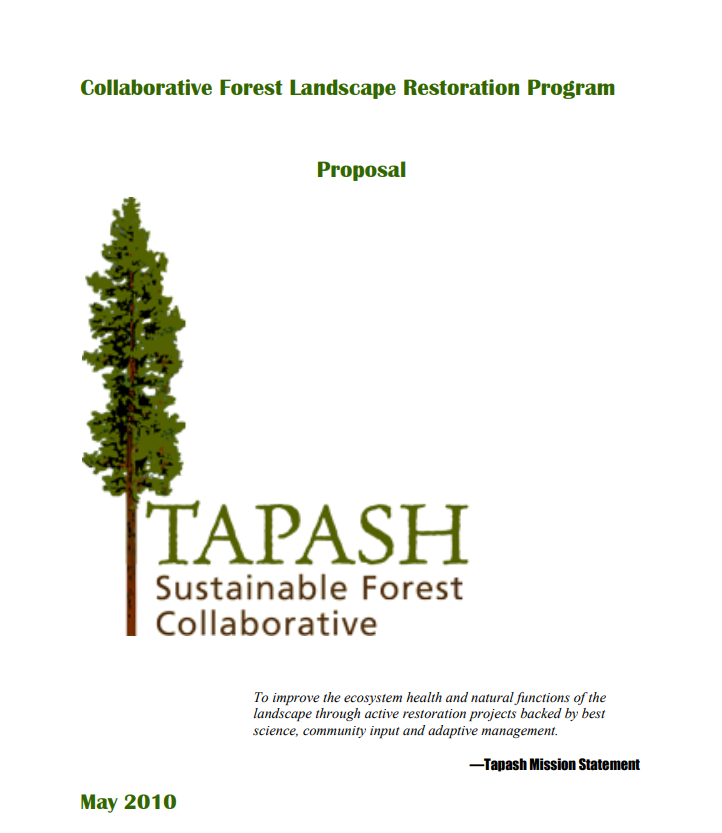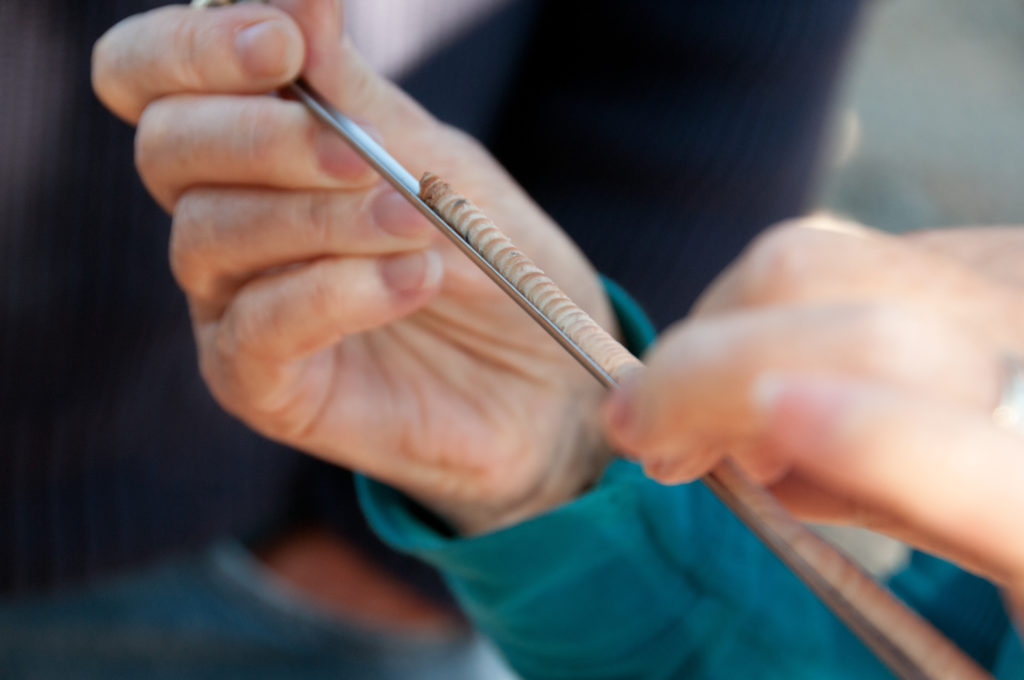
Background
Congress established the Collaborative Forest Landscape Restoration Program to encourage collaborative, science-based ecosystem restoration of priority forest landscapes. The Tapash CFLR landscape in central Washington includes 1.6 million acres of dry forest with a recent history of large wildfires destructive to forest and community values. Tapash CFLR activities that reduce future wildfire risk are also increasing forest job opportunities, bio-energy development opportunities, salmon habitat and passage, water quality and enhancing ecosystem resilience to wildfires.
I have found that the stakeholders often have more in common than we do our differences. The protection, enhancement and restoration of these resources is something we all seem to agree on.
-Phile Rigdon, Deputy Director Yakama Nation Department of Natural Resources

